Common Name(s): Black cherry, American cherry
Scientific Name: Prunus serotina
Distribution: Eastern North America
Tree Size: 50–100 ft (15–30 m) tall,
3–5 ft (1–1.5 m) trunk diameter
Average Dried Weight:AVERAGE DRIED WEIGHT
Density is the measurement of a wood’s weight per unit volume. Here, "dried weight" specifically refers to wood at 12% moisture content, and values are given in pounds per cubic foot and kilograms per cubic meter. Also keep in mind that density commonly varies by +/- 10% from the average.
Click on the link "Average Dried Weight" for more details. 35.0 lbs/ft3 (560 kg/m3) Low WEIGHT TIERS
Extremely Low: 0+ kg/m3
Very Low: 420+ kg/m3
Low: 520+ kg/m3
Medium-Low: 620+ kg/m3
Medium: 730+ kg/m3
Medium-High: 840+ kg/m3
High: 960+ kg/m3
Very High: 1,080+ kg/m3
Extremely High: 1,200+ kg/m3
Tiers are based on CSIRO provisional strength groupings (SD1-SD8) based on density.
Janka Hardness:JANKA HARDNESS
This test measures a wood’s resistance to indentation, and is the pounds of force (or Newtons) required to embed a .444" (11.28 mm) diameter steel ball halfway into the wood. Values are for side grain, measured at 12% MC.
Click on the link "Janka Hardness" for more details. 950 lbf (4,230 N) Low JANKA HARDNESS TIERS
Extremely Low: 0+ N
Very Low: 2,050+ N
Low: 3,150+ N
Medium-Low: 4,480+ N
Medium: 6,280+ N
Medium-High: 8,380+ N
High: 11,080+ N
Very High: 14,000+ N
Extremely High: 17,450+ N
Tiers are derived from CSIRO provisional strength classifications (SD1-SD8) in conjunction with the USDA's estimated hardness based on density.
Modulus of Rupture:MODULUS OF RUPTURE
Sometimes called bending strength, this test measures a wood’s strength before breaking (i.e., rupturing). Values are given in pounds of force per square inch and megapascals, measured at 12% MC.
Click on the link "Modulus of Rupture" for more details. 12,300 lbf/in2 (84.8 MPa) Medium MOR TIERS
Extremely Low: 0+ MPa
Very Low: 45+ MPa
Low: 55+ MPa
Medium-Low: 65+ MPa
Medium: 78+ MPa
Medium-High: 94+ MPa
High: 110+ MPa
Very High: 130+ MPa
Extremely High: 150+ MPa
Tiers are based on CSIRO strength classifications (SD1-SD8).
Elastic Modulus:MODULUS OF ELASTICITY
This test measures the wood’s level of deformation when under a given load. Higher values indicate less deformation (i.e., stiffer). Values are given in pounds of force per square inch and gigapascals, measured at 12% MC.
Click on the link "Elastic Modulus" for more details. 1,490,000 lbf/in2 (10.3 GPa) Low MOE TIERS
Extremely Low: 0+ GPa
Very Low: 7.9+ GPa
Low: 9.1+ GPa
Medium-Low: 10.5+ GPa
Medium: 12.5+ GPa
Medium-High: 14.0+ GPa
High: 16.0+ GPa
Very High: 18.5+ GPa
Extremely High: 21.5+ GPa
Tiers are based on CSIRO strength classifications (SD1-SD8).
Crushing Strength:CRUSHING STRENGTH
Also called compression strength, this test measures the maximum stress sustained before failure. Force is applied parallel to the grain (producing stress akin to chair legs). Values are given in pounds of force per square inch and megapascals, measured at 12% MC.
Click on the link "Crushing Strength" for more details. 7,110 lbf/in2 (49 MPa) Medium CRUSHING STRENGTH TIERS
Extremely Low: 0+ MPa
Very Low: 30+ MPa
Low: 36+ MPa
Medium-Low: 41+ MPa
Medium: 47+ MPa
Medium-High: 54+ MPa
High: 61+ MPa
Very High: 70+ MPa
Extremely High: 80+ MPa
Tiers are based on CSIRO strength classifications (SD1-SD8).
Shrinkage:SHRINKAGE
These values represent the percentage change in radial and tangential faces of the wood—as well as the total (volumetric) shrinkage—as the moisture content goes from green (maximum) down to oven-dry (minimum), approximating the wood's stability with changes in humidity. T/R ratio helps to estimate the uniformity of the shrinkage across different wood faces.
Click on the link "Shrinkage" for more details. Radial: 3.7%, Tangential: 7.1% High SHRINKAGE TIERS
Very Low: 0%+
Low: 3.6%+
Medium: 5.1%+
High: 6.6%+
Very High: 8.1%+
Tiers are based on tangential shrinkage (green to oven-dry) from CSIRO shrinkage classifications (1-5).
Volumetric: 11.5%, T/R Ratio: 1.9
Color/Appearance: Heartwood is a light pinkish brown when freshly cut, darkening to a medium reddish brown with time and upon exposure to light. Wide sapwood is a pale yellowish color. It is not uncommon for boards to contain at least some sapwood portions along the outer edges.
Grain/Texture: The grain is usually straight—with the exception of figured pieces with curly grain patterns. Has a fine, even texture with moderate natural luster.
Rot Resistance: Heartwood is rated as being very durable and resistant to decay, though not typically used in exterior applications.
Workability: Black cherry is known as being one of the best all-around woods for workability. It is stable, straight-grained, and machines well. The only difficulties typically arise if the wood is being stained, as it can sometimes give blotchy results—using a sanding sealer prior to staining, or using a gel-based stain is recommended. Sapwood is common, and may contribute to a high wastage factor.
Odor: Has a mild, distinctive scent when being worked.
Allergies/Toxicity: Breathing black cherry’s sawdust has been associated with respiratory effects such as wheezing. See the articles Wood Allergies and Toxicity and Wood Dust Safety for more information.
Pricing/Availability: Lumber and veneer are in adequate supply. Along with black walnut (Juglans nigra), black cherry is considered a premier American cabinet hardwood, and prices are in the mid to upper range for a domestic hardwood.
Sustainability: This wood species is not listed in the CITES Appendices, and is reported by the IUCN as being a species of least concern.
Common Uses: Cabinetry, fine furniture, flooring, interior millwork, veneer, turned objects, and small specialty wood items.
Comments: Black cherry develops a rich reddish-brown patina as it ages that’s frequently imitated with wood stains on other hardwoods such as yellow poplar (Liriodendron tulipifera). This aging process can be accelerated by exposing the wood (in a judicious manner) to direct sunlight.
Not to be confused with sweet cherry (Prunus avium), a tree native to Europe and Asia that’s the primary source of edible cherries. While the fruit of black cherry is technically edible, P. serotina is considered a timber species, while the many cultivars of P. avium (and the closely related P. cerasus) are considered fruit trees and are not nearly as widely used for lumber.
Images: Drag the slider up/down to toggle between raw and finished wood.
A special thanks to Adam Cottrill for providing the turned photo of this wood species, and Salem Barker for providing the sculpture photo of this wood species.
Identification: See the article on Hardwood Anatomy for definitions of end grain features.
Porosity:POROSITY
Specifies the overall pore structure (ring-porous, semi-ring-porous, or diffuse porous), and notes if annual growth rings may still be seen even for diffuse porous hardwoods.
Click on the link “Porosity” for more details. semi-ring-porous to diffuse-porous
Arrangement:ARRANGEMENT
Describes the more individual pore arrangements found throughout the end grain surface, such as solitary, multiples, chains, clusters, etc.
Click on the link “Arrangement” for more details. earlywood can form a single continuous row of pores
Vessels:VESSELS
Describes the relative size and frequency of the pores (vessels), as well as any contents found in the pores, such as tyloses, colored mineral deposits, etc.
Click on the link “Vessels” for more details. medium to small in earlywood (sometimes grading down slightly smaller diameter in latewood), numerous (also sometimes grading down to moderately numerous in latewood)
Rays:RAYS
Describes the relative width and frequency of the rays (appearing as thin vertical lines on the endgrain), as well as a note on if these rays are visible with/without magnification.
Click on the link “Rays” for more details. medium width, normal spacing; rays may be just barely visible without magnification
Lookalikes/Substitutes: The lighter sapwood can easily be confused with other diffuse porous hardwoods like birch or maple. Yellow poplar is also used frequently as a substitute for cherry, particularly when stained to color match cherry’s heartwood. Black cherry can be separated from most other lookalike hardwoods because of its tendency towards being semi-ring-porous. It’s growth ring boundaries will generally be defined by a slight concentration of pores along the growth ring, while diffuse-porous woods will typically have their growth rings delineated by a whitish line of marginal parenchyma.
Notes: Different Prunus species, as well as many related fruitwood species in the Rosaceae family, can’t be reliably separated on the basis of wood anatomy.
Related Content:

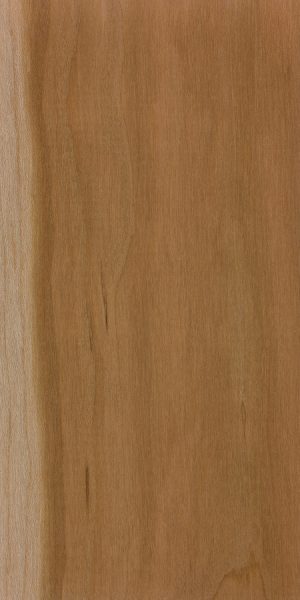
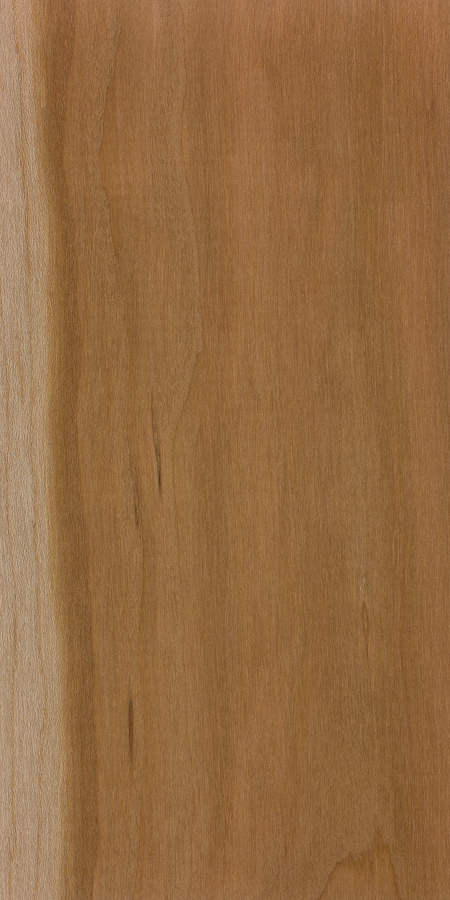
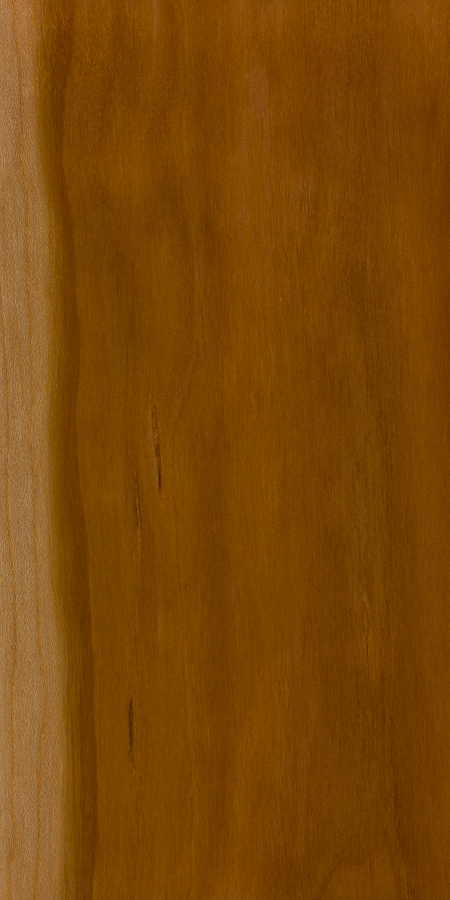

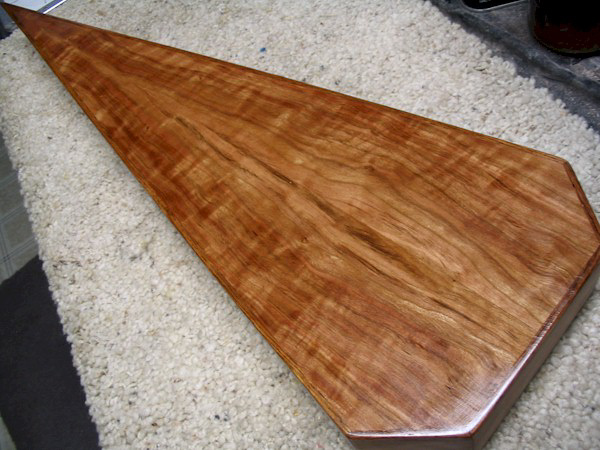
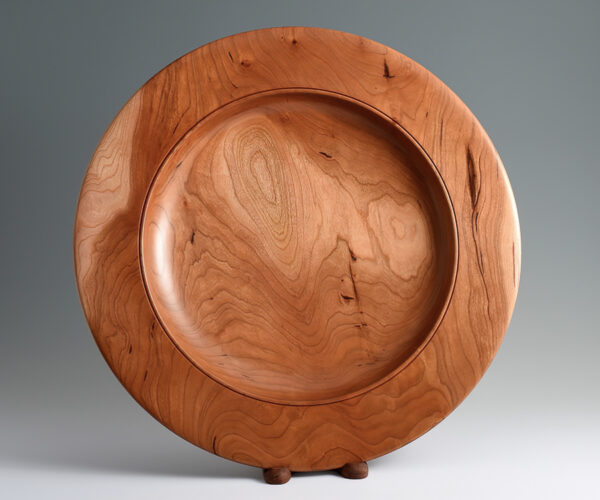
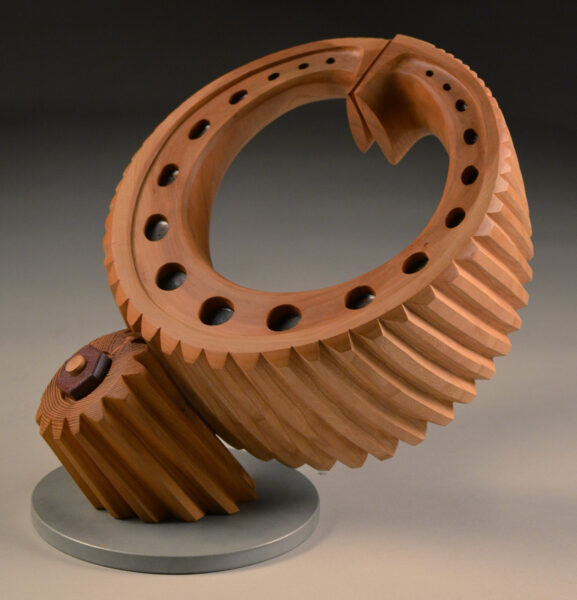
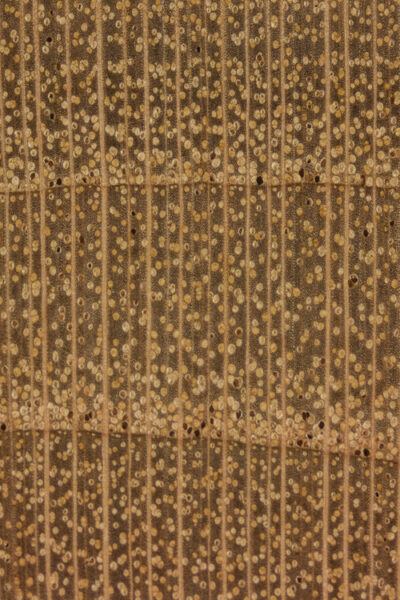


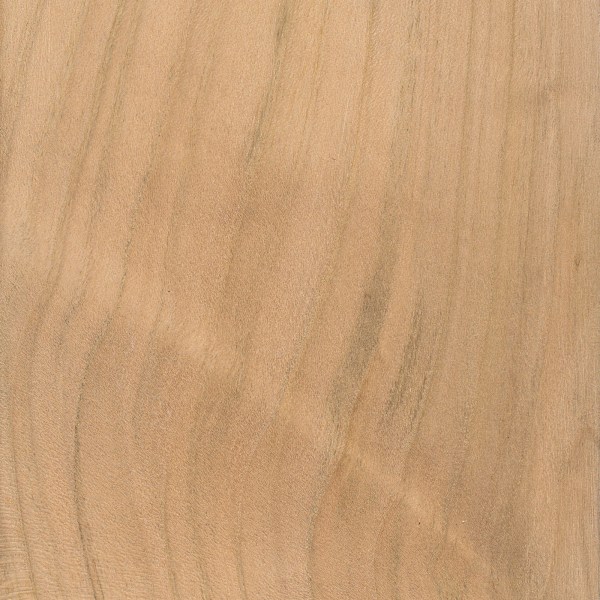

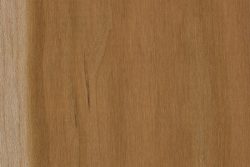
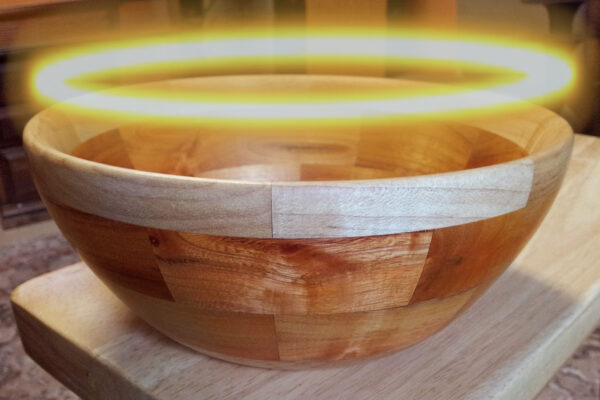
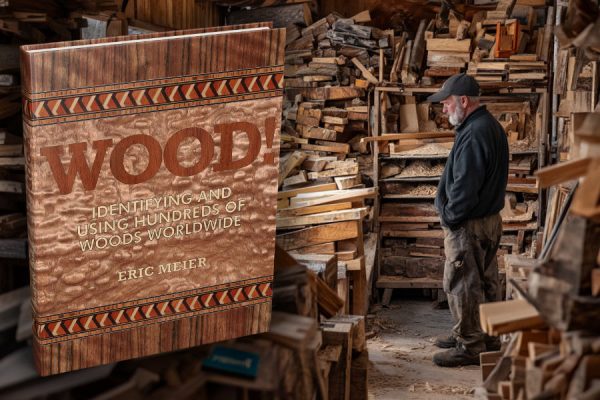
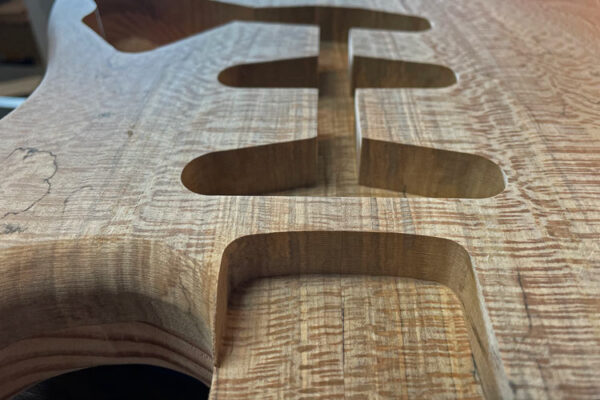
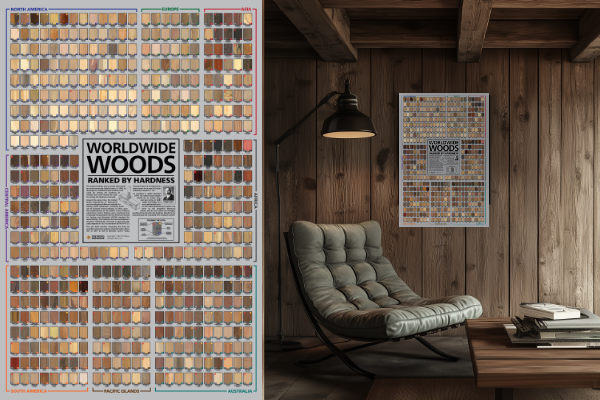
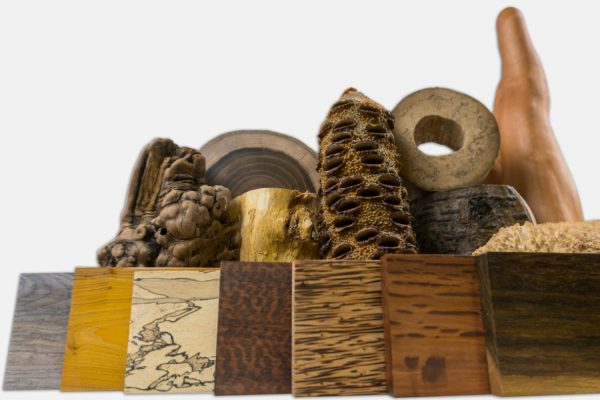
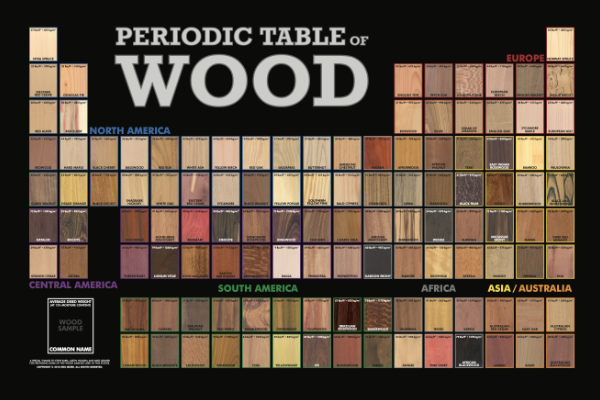



I’m skeptical of the densities noted on this website. Perhaps I’m calculating incorrectly? A separate google search indicates cherry has a density of 43-56 lbs/cf while Doug fir is low 30’s.
My calculations agree with those numbers and because I am combining these woods on a work bench build I can say cherry is extremely dense compared to Doug fir. However the density noted here would indicate they are roughly the same “hardness”. Is there a typo for both Black and Sweet Cherry on this website?
What is the moisture content of the wood? Chances are the numbers you are encountering are for green, freshly felled lumber, and not dried material. My source for the average dried weight for black cherry comes from the USDA’s Wood Handbook, as well as “Hardwoods of North America” by Harry Alden–both of which use data taken from the FPL Technical Bulletin 479, which in my opinion is about the highest authority you could ask for in terms of domestic US species, and even includes the county where the trees came from (in this case, the cherry came from Potter county,… Read more »
Thanks for the response Eric! I haven’t verified the moisture since my meter has gone missing after a move from Arizona but my cherry sample came from a moisture protected area in PNW from an estate sale in a decades old collection. Indoors our ambient humidity in PNW is around 40-50% average (a little lower during winter due to home heating) which I suspect has been making all my stock lean heavier than what I’m finding listed. Interestingly, Janka hardness for black cherry on your listing is a third higher than that of Doug Fir which makes sense and reminds… Read more »
Also consider that the data from Douglas fir is an average of four different geographic regions, but all were wild specimens, and today’s plantation grown stock is generally lighter and softer too, so that might be throwing off your comparison too.
I have some cherry wood that is absolutely rock hard, probably just about as hard as the Brazilian cherry I’ve worked with and just as hard on my tools if not more, but it has every characteristic of black cherry. From what I know it was kiln dried. Can how the wood was dried affect the hardness?
Hi! First, GREAT website! Second, I have 2 questions about Black cherry: [1] Why does the description note that sapwood is “wastage”…? Is it only because of the color, or is it too inferior to bother with at all, and if the latter, what makes it so bad…? I personally have use for pale colors, which is why I’m asking. [2] I don’t see info about bending Black cherry. Would it be difficult or catastrophic to bend a piece that’s about 1/8-inch in thickness and maybe 2-inches wide…? If that’s possible, would it also be “bendable” up to a 1/4-inch… Read more »
1. Sapwood is only considered waste if you don’t plan on using it in a project. Some people like a two-toned look, while others insist on having a piece (such as fine furniture) that is all heartwood.
2. I don’t have experience with bending cherry, but a lot would depend on the tightness of the radius you are trying to bend it to and bending method.
Thank You, Eric, for clarifying that about the sapwood!
(I’ll have to look into whether some sort of “repurpose” facility for wood pieces like there is for furniture and building supplies.)
I was thinking of using the “hot water method”, 4 pieces to bend with the total being a circle with outer radius of 6″, but I admit I hadn’t thought about all of the involved factors – ooops! It’s probably always best in any event to take a couple of thin slices from any piece and test them to see whether the actual individual piece would be suitable.
Can Black cherry be used to do the ceiling of a back porch?
This is a piece of cherry – – either native black cherry (Prunus serotina) or common chokecherry (P. virginiana) – – cut in southern Maryland years ago. When you look at one side of the wood, somewhat askance / at an angle, these wonderful figures show up. It’s not the usual grain – – what causes these patterns? Is this unique to cherry? Any info will be appreciated – – thanks!
The effect that you are seeing is called chatoyance, and the anatomical element that is displaying that property is the rays — commonly called ray fleck. There are quite a number of wood species with varying amounts of ray fleck (and chatoyance). Mahogany is one with a good amount of both. American sycamore can also look nice too.
Thanks so much! I’ve played a little with sycamore and have noticed it there, too, as you say. Thanks again!
Anyone have any experience in using cherry for exterior millwork like windows and doors? Sapele prices are sky rocketing and cherry is cheap right now. Description says it is very rot resistant but says not commonly used in exterior applications. Why?
I’m guessing it’s not used in exterior applications because sapwood is so common (which is definitely not rot resistant). You’d probably have to be careful to not include any sapwood if you were going to use it outdoors.
My son has three mature black cherry trees, dying and to be removed. He has the chance of keeping the logs, straight for 12-15 feet, with diameters of 12-18″. Problem is they have Gummosis. Are the logs likely to be usable as lumber? Firewood, and possibly turning?
I used a plank of cherry to make a canoe paddle some 28 years ago. It is the perfect wood for this use as it has a warm tactility and a little flex in the shaft that allows me to feel the water as I paddle. I have only ever finished it with tung oil, which I redo annually before the paddling season starts (I live in Canada). I have used it every year for all but the more turbulent whitewater trips. No other paddle I have tried has the same sensitivity. The paddle is still in wonderful condition, except… Read more »
thank you for this web site— a wonderful resource! what mechanical property of a wood describes its resistance to splitting along the grain? the specific problem I’m trying to solve relates to dining room chairs with cherry legs. To protect our wooden floors, they need pads. But the adhesive sort work poorly — they slip off. so I’m trying to figure out whether I can safely screw a padded foot to the endgrain at the bottom of the leg. Challenge is that the leg tapers to a relatively narrow profile — roughy 1-1/4” by 1/2”. Seems like a recipe for… Read more »
I’m not sure there’s a scientific test that tests this exact property, but I could be mistaken. It seems it would be very subjective based on size of object being forced into the endgrain, and where the pressure was being exerted, either along a growth ring or ray, or just the wood fiber. If it were me, I’d get an appropriately sized screw, drill a slightly larger than usual pilot hole to ensure the wood doesn’t slip, and then put a couple of drops of thin CA glue down the hole before screwing in to reinforce the grain. I can’t… Read more »
Thanks, Eric. Probably a good occasion for mocking up a test leg from scrap and seeing how much abuse it can take.
Maybe pre-drill for something like this…
https://www.ebay.com/itm/383933752256?chn=ps&mkevt=1&mkcid=28&var=652258172944
That would be less traumatic to the end grain than a screw I think.
Is 5 yr dried cherry slabs good for tables and bar tops at 2 1/2″ thick? I’m allergic to tree nuts etcetera which wood (trees) do not bear nuts? Thanks in advance
Cherries are fruit trees, not nut trees, as are Apple, Peach, and Apricot. Nut trees include Almond, Oak, Hickory, Pecan, and Walnut. A quick google or wikipedia search on the tree in question will tell you whether they bear fruit, nuts, or something else. But while I’m no expert on allergies, I find it hard to believe that working wood from a certain tree would aggravate an allergy to its fruit. Especially if you use dust collection and/or dust masks when necessary.
I have black cherry sprouts all over my property, (maybe 100+) that are 3 to 5 feet high, along with several mature trees. I transplanted a couple dozen to see if they would thrive and seem to be doing well. I am considering starting a tree farm on another 170 x 170 lot that have. Any thoughts on viability or spacing.
I have about 30 or so wild cherry trees on my property. Is the wood safe to use for firewood or cooking?
I regularly smoke meat with the secondary wood from wild cherry trees, it is one of the best for this. However, the trunk of the trees I cut are used for lumber, quite valuable lumber. It will burn just fine but it makes better furniture in my opinion.
I know from experiences lichtenberg burning black cherry that if you brush on a solution of around a teaspoon of baking soda per cup of water, the solution will make the heartwood of most pieces a vibrant orange color. Some slightly figured pieces may develop more discoloration in some areas of the figuring, which can look a bit unattractive. But for the most part, it makes the wood on the surface quite beautiful, and if you don’t like it, you can always sand it away later. Also, the same thing can be done to pretty much any other wood to… Read more »
how are the colors holding up?
I’m located in Florida where spearfishing is very popular. I was considering making a speargun out of black cherry but I am worried about the constant shock and and stress on the wood from firing and reloading. Will this wood be able to withstand this type of stress for a long period of time?
For rot resistance it would do well, but it is relatively soft (950) so it may not do so well with regards to elasticity from draw weight and shock of release.. I have seen mahogany used for spearguns, and some types of mahogany are similar in hardness to cherry, so..Give it a shot! (No pun intended) Since you’re in Florida, osage orange might be a good option, rot resistant and is used to make bows.
Osage is a great thought but can not typically be grown or naturalized here in Fla. He coukd of course order it.
Try Osage Orange wood for your speargun. Maclura pomifera is the scientific name, its also called bowwood. Its a coveted wood for native american bow makers. Its has an unparalleled stress strength factor and does not rot. It is amazing light once dried for the density and flexibility.
As a boyer we make bows out if Black Cherry wood. No problem with shock, it’s all in the design. Use the heart wood for more strength. The water damage is more of a concern.
Black locust might be a good option. It’s plentiful, grows straight, hard, rot and water resistant. Commonly used for fence posts
In direct sunlight, unstained cherry will bleach almost white. On the other hand if it is in a room with synthetic carpet the chemical vapor from the carpet will shortly turn unvarnished cherry a very pleasing dark red “cherry” color. Best look, imho, comes from indirect lighting, no carpets, but takes many years.
Would you recommend using an oil finish like water lox if so how would you prep the before putting on the oil
This site puts Black Cherry in the highest rot resistance category. I’m in the building industry, and have never heard of cherry being used for exterior conditions. We are considering various wood species for vertical cladding on the exterior of a masonry building. Is cherry a good option? I’m skeptical. If it’s highly rot resistant, and less expensive than ipe or mahogany, then why don’t we see it being used for this type of application…..ever?
Black cherry sapwood in not rot resistant at all, Most cherry is sawn for grade and nearly all boards contain sapwood often both faces. If lower grade larger logs are sawn to exclude sapwood and further manufacture eliminates sapwood in the product, fencing, cladding, furniture, cherry is an excellent exterior wood. My company has been using it outdoors for 40 years. Live sawing cherry logs is a simple way to emphasize heartwood due to the higher percentage partially rift, rift, and quartered wood produced. The pieces do not have to be clear or without resin pockets to perform well outdoors
White oak would be a good choice cherry would be above pine on my list and way below even red oak but white oak is boat building materials
Is Black Cherry and Cherry the same thing?
In most of the US, yes. When we say cherry it is usually referring to black cherry.
Can I get some input into why cherry isn’t used for baseball bats?
For a baseball bat, Cherry would be too soft (denting) and does not possess enough shock resistance (against cracking/splitting), compared to a wood like Ash or Hickory.
I have 20 acres and about 1/3 of the trees are black cherry-the remainder is maple, oak, black walnut and sassafras. I uses the black cheers for four different things. I find the trees themselves to be rather brittle. a windstorm or heavy snowfall results in limbs becoming detached from the tree. These are about 8-18″‘s in diameter and 20-40’ long. I use the straight segments for lumber-air dry and cut into cant with my chainsaw-3 years drying on racks in my barn. I used the planks for furniture-table, cabinets etc I use the shorter fat segments to make wooden… Read more »
I’ve found that I break out in a rash whenever I work with black cherry. After further research, I discovered that reactions like mine are fairly common when working with black cherry.
Is the modulus of rupture too low for cherry to make a sturdy, reliable cane or walking stick?
Cherry makes a stout stick. Make your stick thicker than 3/4″. My straight-strong stick used for 7 years is 7/8″.
I make canes from half inch stock, laminate, and route. Extremely strong.
Does Cherry have a distinct smell that would transfer to a food that is stored in a vessel made from it. It is not listed on the toxic chart so I’m thinking it has little to no irritants or allergy causing properties.
Any smell associated with it other than sweet are probably meaning in smoked form. It smells and burns and smokes meats and things well. Ive seen it as bowls or cutting boards ect.
How do you think black cherry would be to turn for a pool cue as in the butt end not the shaft
I believe it would likely lack heft (weight) if used as a pool cue butt. If the stock is particularly heavy, it could work and work well.
can i use cherry veneer to make skateboard deck ?
I wouldn’t recommend it. Cherry is on the lower end of the hardness scale. I would look at hard maple or hickory as it will hold up to the abuse of the skateboards much better. The maple will have a much more consistent color (mostly light colored) where hickory will have light and dark mixed in but is very, very durable (strongest wood in North America). Another thing you need to do is make sure the substrate you are attaching your veneer to is very strong and durable, otherwise your veneer will not hold up. For instance, if you use… Read more »
Veneer go for it, Solid not so much.
Hardness might not be what your looking for for in a skateboard deck. As long as your core has the Tensile Strength you can put whatever you want on the top.
Thinking about building a baby crib out of Black Cherry. I have two hesitations. One is this low risk of the dust causing respiratory discomfort. For an adult that might be mildly annoying but do people think it’s a lot worse for a baby? I wouldn’t coat it with anything, maybe some natural oil?
Another possible concern is this note that dogs and horses have died from eating fresh Cherry wood sap: https://www.birdsafe.com/woods.htm. More info about that: https://www.petpoisonhelpline.com/poison/cherry/
Dust shouldn’t be an issue in the finished product; it mainly comes up when it is worked in the shop.
I wouldn’t worry about the sap part myself, but I guess it’s up to you. It’s my guess that the animals were eating some part of the living tree itself, and not dried wood.
Those websites listing things poisonous to your pets are getting ridiculous & stupid anymore. It says clearly, “when ingested in toxic amounts” but doesn’t say anything at all about what a toxic amount is. Do a little research and you often find out it is some absurd, truckload type amount that is beyond realistic for anything to eat. In the right amount, water is toxic. Cherry is a very innocuous wood that has been used for cutting boards and kitchen utensils for centuries.
Can someone I.D. this wood?
It is Black Cherry.
I have some Canada Red Cherry wood ( a type of ornamental tree) and was wondering if you wanted a sample of it even though it isn’t a common wood and is similar to black cherry. Also, I was wondering if cherry is usually problematic to dry.
Can someone I.D. this wood?
Hard to tell. It’s stained so it could be any number of carvable species.
Can someone I.D. this wood? ;)
[IMAGE REMOVED BY MODERATOR]